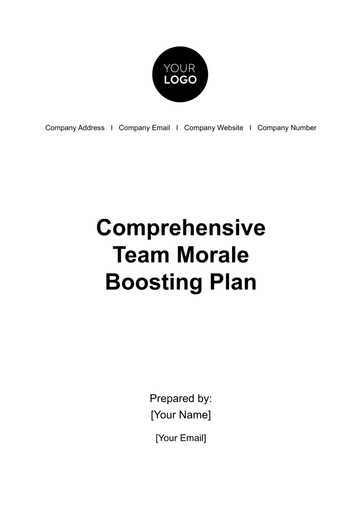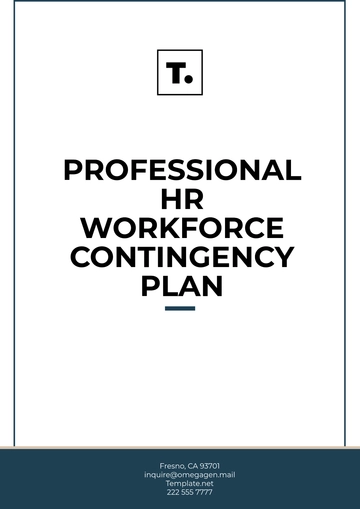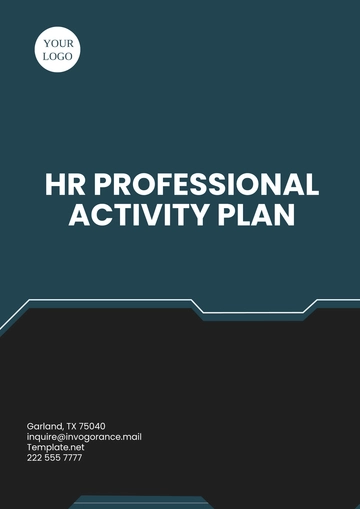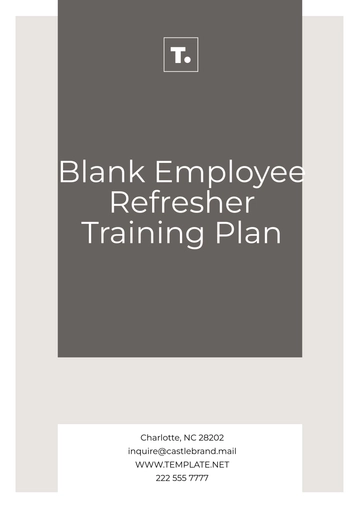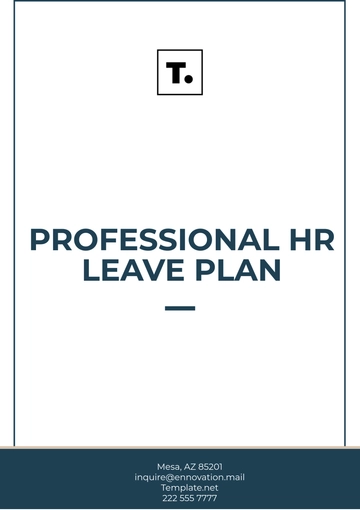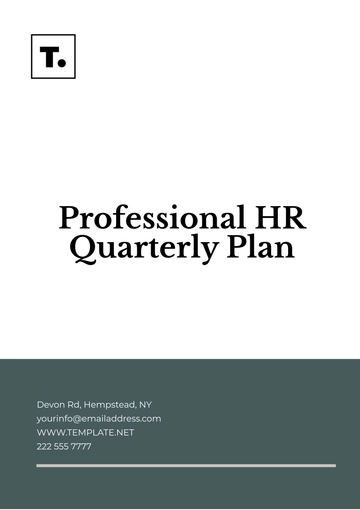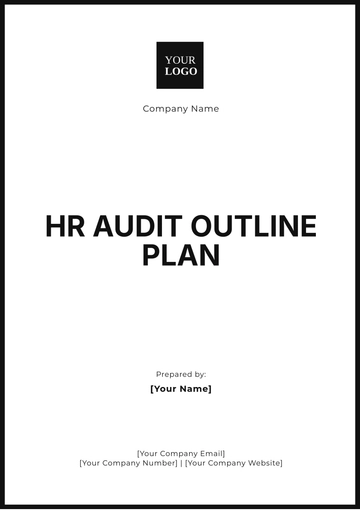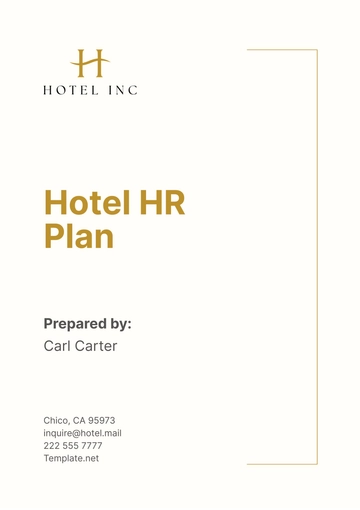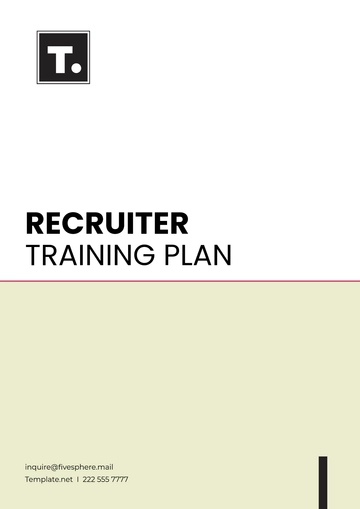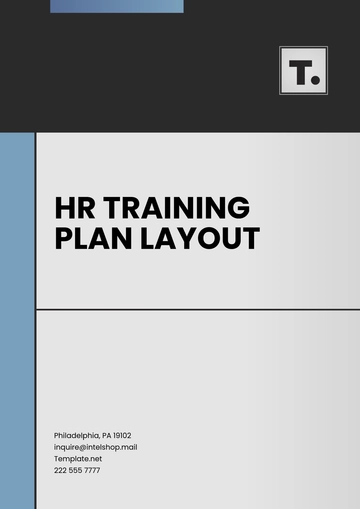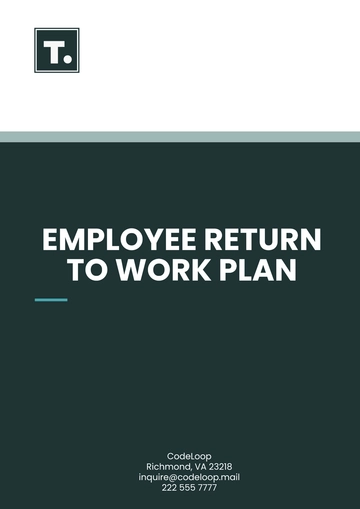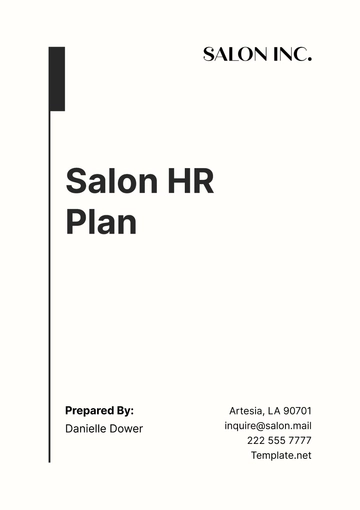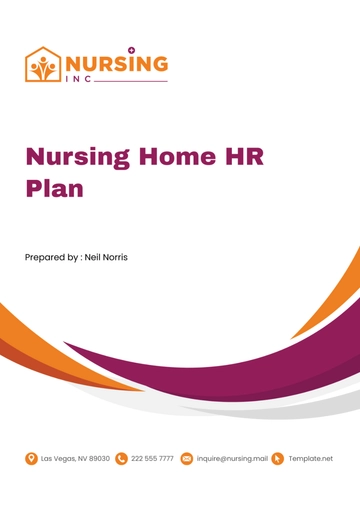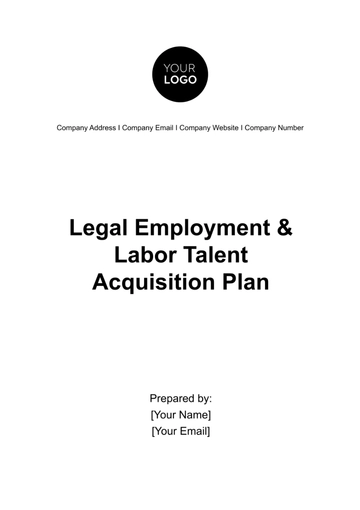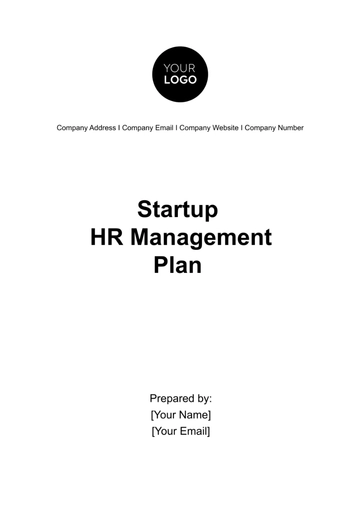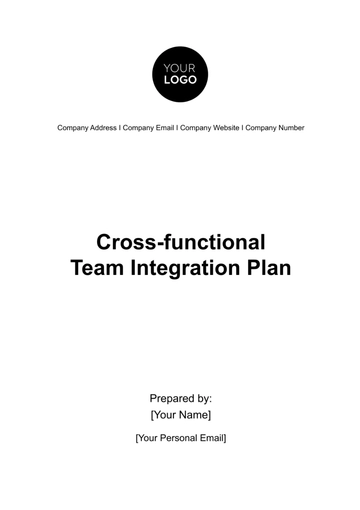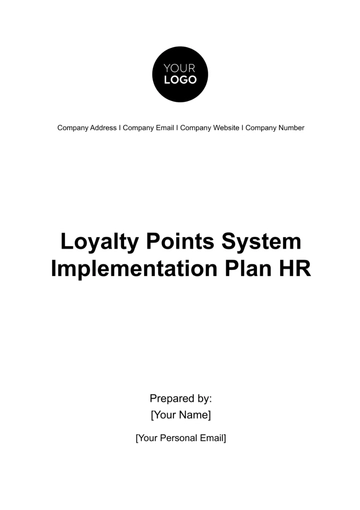Free Employee Relations Crisis Management Plan HR
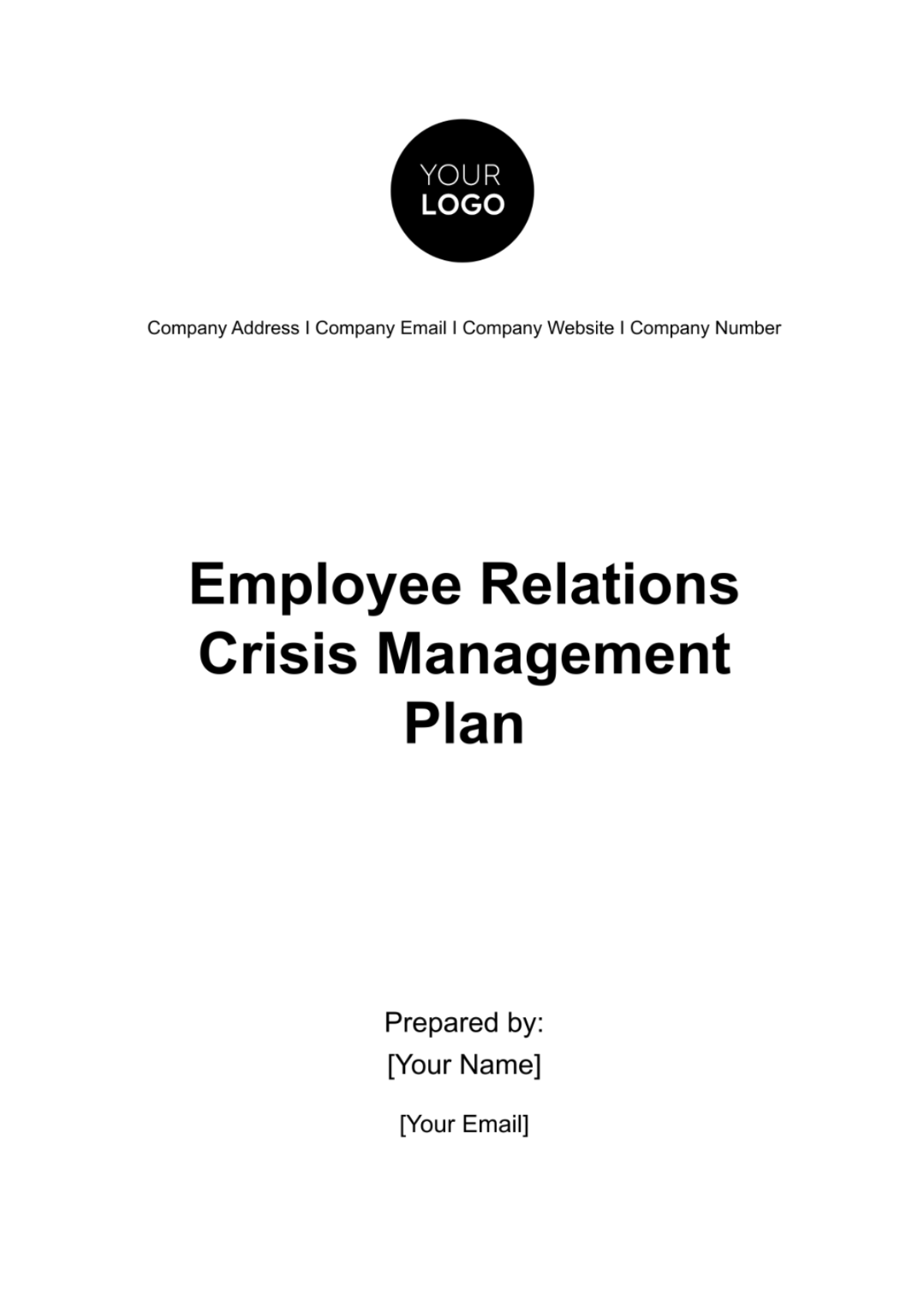
TABLE OF CONTENTS
Section 1: Introduction....................................................................................................3
Section 2: Purpose and Scope......................................................................................3
Subsection 2.1: Objectives.............................................................................................3
Subsection 2.2: Applicability ........................................................................................3
Subsection 2.3: Legal Compliance................................................................................3
Section 3: Crisis Identification and Assessment.........................................................4
Subsection 3.1: Early Warning Signs.............................................................................4
Subsection 3.2: Impact Analysis...................................................................................4
Subsection 3.3: Crisis Severity Levels .........................................................................4
Section 4: Communication Protocol..............................................................................5
Subsection 4.1: Stakeholder Communication...............................................................5
Subsection 4.2: Crisis Messaging.................................................................................5
Section 5: Conflict Resolution Strategies.....................................................................5
Subsection 5.1: Mediation Techniques .........................................................................5
Subsection 5.2: Employee Feedback Mechanisms.....................................................6
Subsection 5.3: Continuous Improvement in Conflict Resolution..............................6
Section 6: Escalation Procedures .................................................................................6
Subsection 6.1: Hierarchical Escalation........................................................................6
Subsection 6.2: External Mediation Services...............................................................7
Subsection 6.3: Crisis Resolution Review.....................................................................7
Section 7: Employee Support Services.........................................................................7
Subsection 7.1: Accessibility of Support Services.......................................................7
Subsection 7.2: Confidentiality Assurance...................................................................7
Subsection 7.3: Continuous Evaluation of Support Programs....................................8
Section 8: Documentation and Record-Keeping ........................................................8
Subsection 8.1: Incident Reporting Protocol................................................................8
Subsection 8.2: Data Privacy Compliance...................................................................8
Section 9: Training and Preparedness ........................................................................9
Subsection 9.1: Regular Training Schedule..................................................................9
Subsection 9.2: Simulation Exercises...........................................................................9
Section 10: Review and Continuous Improvement......................................................9
Acknowledgment...........................................................................................................10
Section 1: Introduction
In response to the dynamic nature of the workplace, this Employee Relations Crisis Management Plan aims to establish a framework for addressing and mitigating employee-related crises. As a seasoned HR professional, I recognize the need for a proactive approach to maintain a positive work environment and uphold the well-being of both employees and the organization.
Section 2: Purpose and Scope
The purpose of this plan is to provide guidelines for managing crises related to employee relations, including but not limited to conflicts, misconduct, and performance issues. The scope encompasses all employees and situations that may impact workplace harmony and organizational effectiveness.
Subsection 2.1: Objectives
This subsection outlines the primary objectives of the crisis management plan, emphasizing the need for swift resolution, minimal disruption, and the promotion of open communication. By clearly defining these objectives, HR ensures that all stakeholders understand the overarching goals of the plan, fostering a shared commitment to resolving employee-related crises efficiently and collaboratively.
Subsection 2.2: Applicability
In detailing the plan's applicability, HR specifies that it covers all employees, regardless of position or level. This ensures a comprehensive approach to crisis management, underscoring the organization's commitment to treating all employees equitably. The subsection also highlights the plan's coverage of various employee relations issues, signaling a proactive stance in addressing conflicts, misconduct, and performance concerns.
Subsection 2.3: Legal Compliance
By dedicating a subsection to legal compliance, HR asserts its commitment to conducting crisis management activities within the boundaries of employment laws and regulations. This includes providing training to HR personnel and relevant stakeholders, and ensuring that all crisis interventions align with legal requirements. This proactive approach mitigates legal risks and reinforces the organization's commitment to ethical and lawful practices in employee relations.
Section 3: Crisis Identification and Assessment
In the event of a potential crisis, HR will promptly identify and assess the situation. This involves gathering information from relevant parties, analyzing the impact on individuals and the organization, and determining the severity and urgency of the crisis.
Subsection 3.1: Early Warning Signs
This subsection emphasizes the importance of recognizing early warning signs to enable proactive crisis intervention. Training programs for managers and employees will focus on identifying subtle cues and behavioral changes that may indicate underlying issues. By emphasizing early detection, HR aims to address conflicts at their inception, preventing escalation and contributing to a more harmonious workplace.
Subsection 3.2: Impact Analysis
In this subsection, HR outlines a systematic approach to conducting impact analyses during a crisis. By considering not only immediate issues but also potential long-term effects on employee morale and organizational reputation, HR ensures a thorough understanding of the crisis's scope. This proactive approach enables HR to implement targeted interventions and allocate resources effectively to address both immediate and lingering consequences.
Subsection 3.3: Crisis Severity Levels
HR defines and categorizes crisis severity levels, providing a structured framework for prioritizing and responding to crises. This approach ensures that resources are allocated based on the urgency and magnitude of each situation. By establishing clear criteria for severity levels, HR facilitates a swift and appropriate response to crises, minimizing the impact on the organization and its employees.
Section 4: Communication Protocol
Effective communication is paramount during a crisis. HR will establish a clear communication protocol to disseminate accurate and timely information to employees, management, and other stakeholders. This includes utilizing various channels such as email, meetings, and, if necessary, external communications.
Subsection 4.1: Stakeholder Communication
This subsection outlines the channels and procedures for communicating with various stakeholders during a crisis. By establishing clear communication pathways, HR ensures that they will disseminate all accurate and timely information to employees, management, and external parties. This proactive communication strategy fosters transparency, builds trust, and demonstrates the organization's commitment to keeping all stakeholders informed.
Subsection 4.2: Crisis Messaging
Here, HR introduces pre-approved crisis messaging templates to maintain consistency and clarity in communication. These templates balance transparency with the need to protect sensitive information, allowing for a swift and controlled response. By providing a structured approach to crisis communication, HR ensures that messaging aligns with organizational values and mitigates potential misunderstandings during tumultuous times.
Section 5: Conflict Resolution Strategies
HR will employ proactive conflict resolution strategies, encouraging open dialogue and mediation to address issues at an early stage. These strategies aim to prevent escalation and foster a collaborative resolution, ensuring a healthy work environment.
Subsection 5.1: Mediation Techniques
HR emphasizes the importance of mediation techniques in resolving conflicts, and providing training to designated personnel. This subsection underscores the organization's commitment to fostering a collaborative environment where everyone addresses these conflicts constructively. By equipping personnel with mediation skills, HR empowers them to facilitate dialogue, promote understanding, and guide parties toward mutually acceptable resolutions.
Subsection 5.2: Employee Feedback Mechanisms
This subsection introduces mechanisms for anonymous employee feedback, encouraging open expression of concerns and grievances. By establishing these channels, HR aims to create a safe space for employees to voice their opinions without fear of reprisal. This proactive approach allows HR to identify and address emerging issues early, contributing to a healthier workplace culture.
Subsection 5.3: Continuous Improvement in Conflict Resolution
HR commits to regular assessments of conflict resolution strategies, ensuring a dynamic and responsive approach to evolving challenges. By continuously evaluating and refining conflict resolution approaches based on feedback and changing dynamics, HR demonstrates a commitment to learning and improvement. This iterative process contributes to a workplace culture that actively seeks to enhance conflict resolution mechanisms over time.
Section 6: Escalation Procedures
In cases where the employees cannot resolve these conflicts through regular channels, HR has defined them. The team will implement escalation procedures. HR will involve higher management or external mediation services to address complex issues and facilitate a fair resolution.
Subsection 6.1: Hierarchical Escalation
In this subsection, HR defines hierarchical steps for escalating employee relations issues. By establishing a clear pathway, HR ensures that they will address these crises in a systematic and timely manner. This approach facilitates efficient communication between different levels of management, enabling swift intervention and resolution. The structured escalation process also helps prevent unnecessary delays and ensures that HR will address these crises at the appropriate organizational level.
Subsection 6.2: External Mediation Services
This subsection highlights HR's proactive approach to involving external mediation services when internal resolution proves challenging. By having established partnerships, HR ensures access to impartial third-party intervention, fostering fair and unbiased conflict resolution. This approach signals the organization's commitment to exploring all avenues for resolution, even when internal resources may be insufficient or conflicts are particularly complex.
Subsection 6.3: Crisis Resolution Review
Post-resolution, HR commits to a comprehensive review of the crisis resolution process. By analyzing the effectiveness of escalation procedures, HR gains insights into the strengths and weaknesses of the crisis management plan. This proactive assessment allows HR to refine and optimize escalation procedures based on real-world outcomes, contributing to continuous improvement in crisis resolution capabilities.
Section 7: Employee Support Services
Recognizing the emotional toll of crises, HR will provide access to employee support services, including counseling and wellness programs. This ensures that employees have the resources they need to navigate challenges and maintain their well-being.
Subsection 7.1: Accessibility of Support Services
HR ensures that support services are easily accessible for employees by providing clear information on how to access counseling and wellness programs. This proactive approach eliminates potential barriers to seeking assistance and communicates the organization's commitment to employee well-being. The HR emphasizes these accessibilities to encourage employees to utilize available support services without hesitation.
Subsection 7.2: Confidentiality Assurance
This subsection focuses on assuring employees of the confidentiality of support services. By establishing a trust-centric approach, HR creates an environment where employees feel secure in seeking assistance. Clear confidentiality assurances promote a culture of openness and trust, contributing to a workplace where individuals are more likely to reach out for support without fear of judgment or breach of privacy.
Subsection 7.3: Continuous Evaluation of Support Programs
HR commits to continuously evaluating the effectiveness of employee support programs. By actively seeking feedback from employees and assessing program outcomes, HR ensures that support services remain aligned with evolving needs. This approach allows HR to adapt and enhance support programs based on real-time feedback, demonstrating a commitment to providing meaningful assistance to employees navigating challenging situations.
Section 8: Documentation and Record-Keeping
Thorough documentation of crisis-related incidents and actions taken is crucial. HR will maintain accurate records to ensure transparency, legal compliance, and the ability to learn from past experiences for continuous improvement.
Subsection 8.1: Incident Reporting Protocol
HR establishes clear guidelines for incident reporting, ensuring that HR will document all the relevant information promptly and accurately. This proactive approach enables HR to gather essential data for crisis analysis and resolution. By outlining a systematic incident reporting protocol, HR creates consistency in documentation practices, facilitating a comprehensive understanding of each crisis and contributing to effective resolution.
Subsection 8.2: Data Privacy Compliance
This subsection underscores HR's commitment to data privacy regulations during crisis documentation. By strictly adhering to legal requirements, HR ensures the protection of employee confidentiality and privacy rights. This proactive approach not only mitigates legal risks but also fosters trust among employees, reassuring them that HR will handle all of their sensitive information with the utmost care and compliance.
Section 9: Training and Preparedness
HR will conduct regular training sessions for employees and management on conflict resolution, crisis communication, and the utilization of support services. Preparedness is key to effectively managing and mitigating employee relations crises.
Subsection 9.1: Regular Training Schedule
HR commits to a regular schedule of training sessions for employees and management on conflict resolution, crisis communication, and support service utilization. By consistently providing training, HR ensures that personnel are well-prepared to handle crises proactively. This ongoing commitment to education fosters a workplace culture that values continuous learning and equips individuals with the skills needed to navigate and resolve employee relations challenges effectively.
Subsection 9.2: Simulation Exercises
This subsection introduces periodic simulation exercises designed to test the effectiveness of the crisis management plan. By engaging employees and management in simulated crisis scenarios, HR ensures that individuals understand their roles and responsibilities in a controlled environment. Simulation exercises also provide an opportunity to identify strengths and weaknesses in the plan, allowing for targeted improvements and adjustments based on real-world simulations.
Section 10: Review and Continuous Improvement
The HR will conduct periodic reviews of the Employee Relations Crisis Management Plan to assess its effectiveness. Feedback from crises, as well as changes in the organizational structure or industry, will be used to update and enhance the plan, ensuring its relevance and efficiency over time.
Acknowledgment
I acknowledge that I have received and reviewed the [Company Name] Employee Relations Crisis Management Plan. I understand my responsibilities in ensuring the safety and well-being of our employees during times of crisis.
Employee Name: Signature: Date: September 10, 2050 | [Company Name] Representative Name: Signature: Date: September 10, 2050 |
[Your Company Name] is committed to maintaining a safe and respectful workplace for all employees and will take all necessary measures to address and resolve employee relations crises promptly and professionally.
- 100% Customizable, free editor
- Access 1 Million+ Templates, photo’s & graphics
- Download or share as a template
- Click and replace photos, graphics, text, backgrounds
- Resize, crop, AI write & more
- Access advanced editor
Elevate your HR strategy with Template.net's Employee Relations Crisis Management Plan HR Template. This editable and customizable resource ensures swift crisis response tailored to your organization's unique needs. With seamless editing in our Ai Editor Tool, fortify your employee relations strategy, navigating challenges effectively. Upgrade today for resilient workforce management.
You may also like
- Finance Plan
- Construction Plan
- Sales Plan
- Development Plan
- Career Plan
- Budget Plan
- HR Plan
- Education Plan
- Transition Plan
- Work Plan
- Training Plan
- Communication Plan
- Operation Plan
- Health And Safety Plan
- Strategy Plan
- Professional Development Plan
- Advertising Plan
- Risk Management Plan
- Restaurant Plan
- School Plan
- Nursing Home Patient Care Plan
- Nursing Care Plan
- Plan Event
- Startup Plan
- Social Media Plan
- Staffing Plan
- Annual Plan
- Content Plan
- Payment Plan
- Implementation Plan
- Hotel Plan
- Workout Plan
- Accounting Plan
- Campaign Plan
- Essay Plan
- 30 60 90 Day Plan
- Research Plan
- Recruitment Plan
- 90 Day Plan
- Quarterly Plan
- Emergency Plan
- 5 Year Plan
- Gym Plan
- Personal Plan
- IT and Software Plan
- Treatment Plan
- Real Estate Plan
- Law Firm Plan
- Healthcare Plan
- Improvement Plan
- Media Plan
- 5 Year Business Plan
- Learning Plan
- Marketing Campaign Plan
- Travel Agency Plan
- Cleaning Services Plan
- Interior Design Plan
- Performance Plan
- PR Plan
- Birth Plan
- Life Plan
- SEO Plan
- Disaster Recovery Plan
- Continuity Plan
- Launch Plan
- Legal Plan
- Behavior Plan
- Performance Improvement Plan
- Salon Plan
- Security Plan
- Security Management Plan
- Employee Development Plan
- Quality Plan
- Service Improvement Plan
- Growth Plan
- Incident Response Plan
- Basketball Plan
- Emergency Action Plan
- Product Launch Plan
- Spa Plan
- Employee Training Plan
- Data Analysis Plan
- Employee Action Plan
- Territory Plan
- Audit Plan
- Classroom Plan
- Activity Plan
- Parenting Plan
- Care Plan
- Project Execution Plan
- Exercise Plan
- Internship Plan
- Software Development Plan
- Continuous Improvement Plan
- Leave Plan
- 90 Day Sales Plan
- Advertising Agency Plan
- Employee Transition Plan
- Smart Action Plan
- Workplace Safety Plan
- Behavior Change Plan
- Contingency Plan
- Continuity of Operations Plan
- Health Plan
- Quality Control Plan
- Self Plan
- Sports Development Plan
- Change Management Plan
- Ecommerce Plan
- Personal Financial Plan
- Process Improvement Plan
- 30-60-90 Day Sales Plan
- Crisis Management Plan
- Engagement Plan
- Execution Plan
- Pandemic Plan
- Quality Assurance Plan
- Service Continuity Plan
- Agile Project Plan
- Fundraising Plan
- Job Transition Plan
- Asset Maintenance Plan
- Maintenance Plan
- Software Test Plan
- Staff Training and Development Plan
- 3 Year Plan
- Brand Activation Plan
- Release Plan
- Resource Plan
- Risk Mitigation Plan
- Teacher Plan
- 30 60 90 Day Plan for New Manager
- Food Safety Plan
- Food Truck Plan
- Hiring Plan
- Quality Management Plan
- Wellness Plan
- Behavior Intervention Plan
- Bonus Plan
- Investment Plan
- Maternity Leave Plan
- Pandemic Response Plan
- Succession Planning
- Coaching Plan
- Configuration Management Plan
- Remote Work Plan
- Self Care Plan
- Teaching Plan
- 100-Day Plan
- HACCP Plan
- Student Plan
- Sustainability Plan
- 30 60 90 Day Plan for Interview
- Access Plan
- Site Specific Safety Plan

